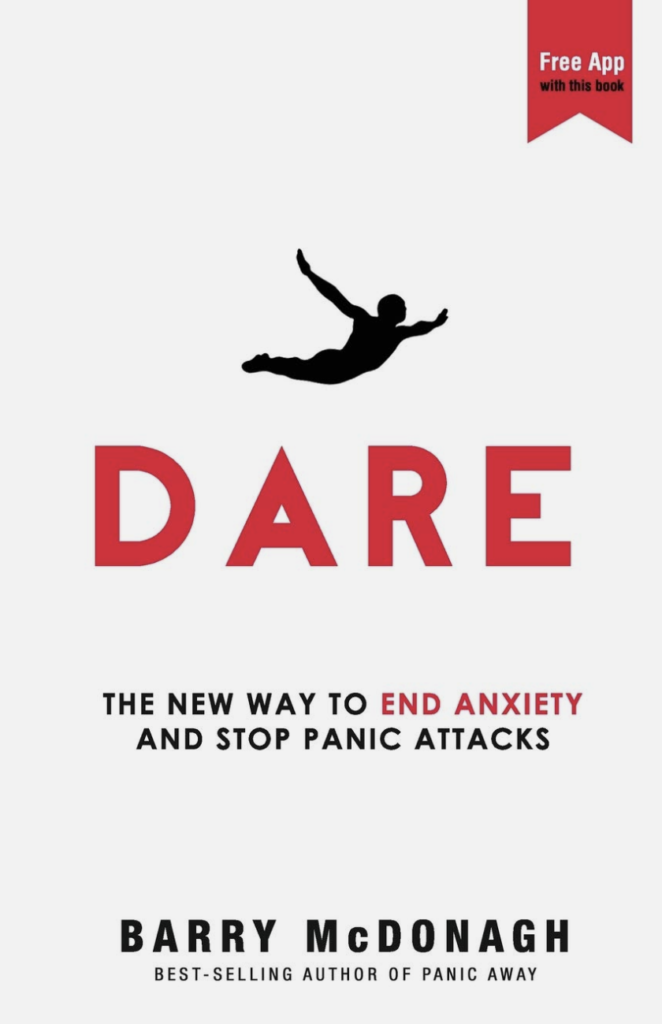DARE: A Book That Helped Me Handle Anxiety (A Bit)
Let’s get one thing straight—there’s no magical cure for anxiety. I haven’t found a golden ticket, and I doubt I ever will. Instead, it’s been about collecting small tools along the way, each one helping a little.

Books are one of those tools. Are they helpful? Yes. Life-changing? Not really. They’re more like companions that offer support when you need it. Out of all the books I read during my worst times, one that actually stuck with me was DARE by Barry McDonagh.
Barry McDonagh isn’t a distant expert; he’s someone who’s been in the thick of anxiety and panic attacks himself. His method, known as the DARE response, was designed out of his own experience. By the time I found this book, I already knew that I couldn’t hide from anxiety—I had to face it head-on. In that sense, the book didn’t offer anything new, however it reinforced that understanding and offered some practical ways to approach it.
Breaking Down the DARE Response
Here’s what McDonagh suggests for handling anxiety:
- Defuse the Fear
Anxiety often starts with a sensation or thought that feels scary. Instead of resisting, the idea is to defuse this reaction by acknowledging it. I found this reminder helpful—it’s about letting the anxiety exist without fighting against it, which often makes it worse. - Allow the Feelings
This was a tough one for me. Instead of trying to escape the discomfort, the suggestion is to allow yourself to feel it fully. It’s like saying, “Okay, I’m anxious, and that’s fine.” I found this step a hit and miss – makes sense in practice, but it takes a lot of work to really implement it. - Face the Anxiety
Running toward anxiety might sound counterintuitive, but it’s about facing your fears instead of avoiding them. I knew avoiding my triggers wasn’t working—it only made the fear stronger. This idea wasn’t new to me, but the way it was framed gave me a push to confront what I’d been avoiding. - Shift Your Focus
The last part is about choosing where to direct your attention. Instead of letting anxiety take the spotlight, it’s about engaging with something meaningful. It’s not just about distraction; it’s a reminder that there are other things worth focusing on, even when anxiety feels overwhelming.
How This Method Fits Into My Toolkit
I wouldn’t say the DARE response was a game-changer, but it has become one of the tools I rely on. It’s practical and straightforward, and the way it’s presented felt approachable. McDonagh’s tone is conversational, more like a friend sharing their own struggles than a self-help guru lecturing you. That made it easier for me to connect with the ideas and actually try them out.
Did It Cure My Anxiety?
No, it didn’t “cure” anything. But it did help. It’s like adding another exercise to your mental workout routine—it takes effort, and you might not see instant results, but over time, it contributes to the overall progress. For me, it’s a book I go back to on rough days when I need a little boost or a reminder of the basics.
Should You Give It a Try?
If you’re looking for a practical approach to managing anxiety, this book might be worth checking out. It’s not a quick fix or a miracle cure, but it offers solid, grounded advice that can fit into your existing strategies. Sometimes, that’s exactly what you need—a reminder that anxiety is tough, but you’re tougher.
